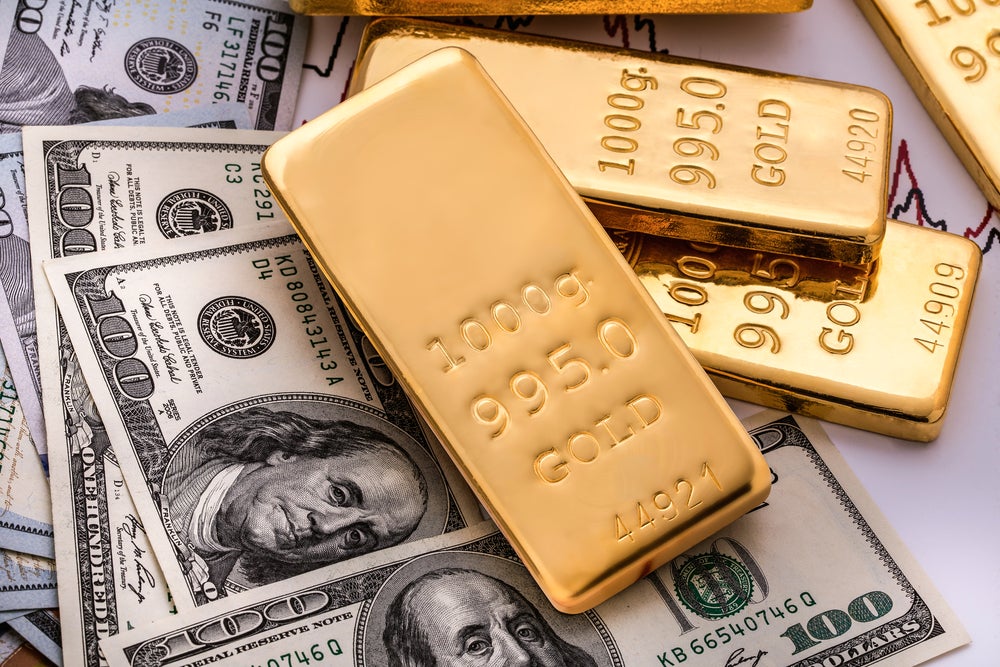In the current economic climate, investors have been increasingly flocking to ‘safe haven’ assets to protect their portfolios, with many of them opting to back gold as signs have emerged that the global economy is reaching something of an inflection point.
After more than a year of skyrocketing prices and a series of fast-paced interest rate hikes from the major central banks, the tide finally seems to be turning on the global battle with inflation. However, the most recent forecasts from the International Monetary Fund show that global economic growth is set to fall from 3.4% in 2022 to just 2.8% in 2023, while many suggest that recent weakness in the banking system has been caused by the rapid tightening of the world’s major economies.
Consequently, with so much volatility and uncertainty in the current economic climate, the price of gold – which is known for its safe haven qualities – has enjoyed a rally of late. In fact, gold is one of the top traded assets at HYCM.
But what causes gold prices to inflate, what factors are behind the recent rally and could gold reach new heights in the next few months?
What causes gold prices to inflate?
As with any asset, the relationship between gold and the key factors that cause its price to inflate is complex and multifaceted. However, there are some general trends that tend to hold true during times of economic uncertainty.
For instance, gold prices have an inverse relationship with real yields, which can be calculated by subtracting the current rate of inflation from a bond’s interest rate (otherwise known as nominal yield). When real yields fall, meaning that the yield from an inflation-adjusted bond is close to zero or in negative territory, investors often support the demand for gold as they seek an alternative investment that could provide a profit despite an inflationary environment.

US Tariffs are shifting - will you react or anticipate?
Don’t let policy changes catch you off guard. Stay proactive with real-time data and expert analysis.
By GlobalDataSimilarly, gold has an inverse relationship with the US dollar due to the fact that the precious metal is dollar denominated. Therefore, when the US dollar is weak, it becomes cheaper for buyers with holdings in other currencies. This pushes up the demand for gold and, by extension, prices increase as well.
Like investors, central banks also turn to gold to diversify their portfolios and reduce exposure to assets that may be more vulnerable to market fluctuations. As such, when inflation is high, central banks favour the inherent value of gold as a finite resource as it may help to preserve their reserves over the long term, even as prices rise elsewhere. In this scenario, central banks can massively inflate the demand for gold, which has an obvious knock-on effect on prices.
What drove the recent gold rally?
With these general trends and market truisms in mind, how can the recent gold rally be explained?
For one, the aggressive interest rate-hiking cycles that have been favoured by almost all major central banks appear to be coming to an end, so prices have rallied as the outlook for interest rates has dropped. On 13 April, for example, US markets saw a 70% chance of one further rate hike from the Federal Reserve in May, while the likelihood of a rate cut by July rose to 56%. Consequently, gold futures reached their highest point in 2023 on 14 April at $2,056.15, reflecting the fact that central bank policy has played a key role in the recent rally.
Prices have also benefitted from investors’ recessionary fears – with interest rates strangling growth, many have turned to gold to defend against a possible stock market sell-off in the event of growth stagnating further. This trend could grow if the likelihood of further rate hikes ticks up again.
Meanwhile, the US dollar has suffered significant losses since the start of the year as the likelihood of the Fed pausing its rate hiking cycle has increased, erasing its 20-year high in September 2022. As such, gold has benefitted from being cheaper to holders of other currencies. While the US dollar is down 1.35% in the year to mid-April, the price of gold has increased by more than 8%.
Elsewhere, recent signs of weakness in the banking system after the collapse of Silicon Valley Bank and the Credit Suisse implosion have also supported gold prices in the past few weeks. Therefore, surging on fears of banking contagion, gold prices grew by more than 2% in a single day in March, before providing the biggest weekly rise since November 2022.
Is the rally here to stay?
According to many analysts, gold is set to reach all-time highs in 2023 as fears of a recession and stock market valuation risks increase. If central banks feel that they need to be more dovish on interest rates to protect growth, gold could rise by more than 20%. Supporting this, if interest rates do start to come down, US dollar weakness would likely continue as well. Meanwhile, inflation looks as if will be stickier than expected around the world, so gold will also continue to enjoy demand for investors who are looking to protect buying power as prices rise.
To conclude, the recent rally in gold prices has been driven by a complex set of factors, including the inverse relationship between gold prices, real yields and the US dollar, as well as increased demand from central banks and investors seeking a safe haven asset in the midst of economic uncertainty. As such, demand should continue to support prices if these macroeconomic trends remain throughout 2023, which could push prices even higher.


